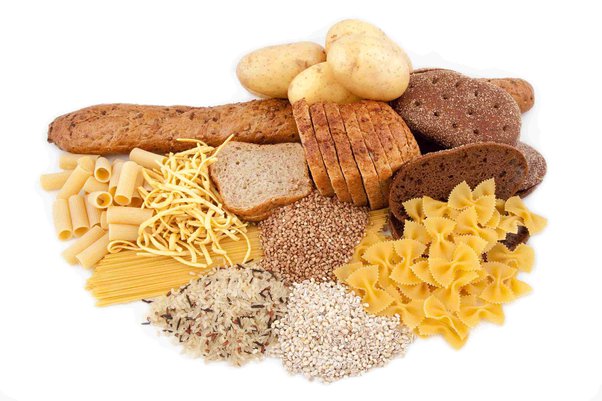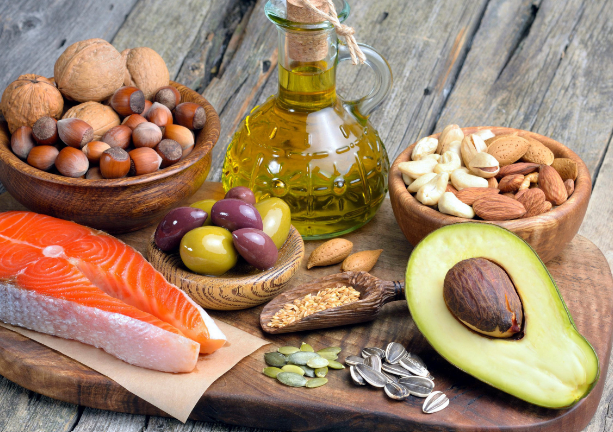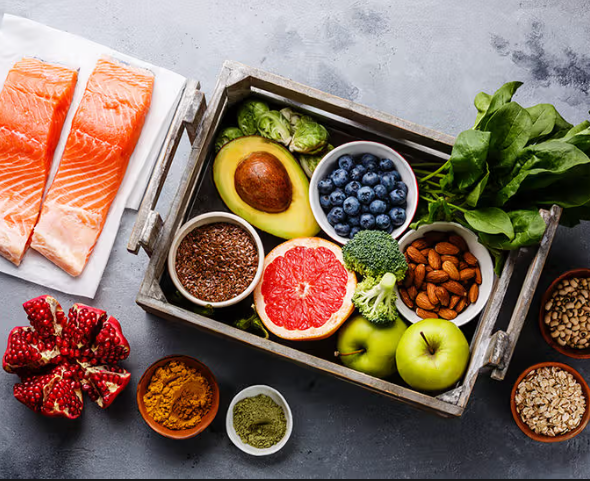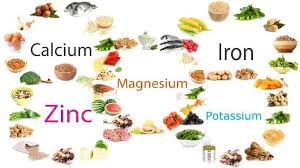PE MODULE 3 AND 4
1/41
Earn XP
Description and Tags
MOD3(NUTRITION), AND MOD4(Strength & Conditioning Exercise, and Muscle Groups)
Name | Mastery | Learn | Test | Matching | Spaced |
|---|
No study sessions yet.
42 Terms
Nutrition
refers to the food intake, which is the key to any level of physical conditioning. It involves the nutrients that get into the body through the regular three meals and snacks.
Nutrient
refers to the substance in food that provides structural or functional components or energy to the body.
Essential nutrient
refers to the substance that must be obtained form the diet because the body cannot make it in sufficient quantity to meet its needs.
List the four basic food groups
Carbohydrates
Protein-rich foods
Fat-rich foods
Vitamin and mineral-rich foods
How many essential nutrients does the Department of Health (DOH) identify?
The DOH identifies six essential nutrients.
List the six major nutrients identified by the DOH.
Carbohydrates (CHO), proteins, lipids (fats), vitamins, minerals, and water (H2O).
What are carbohydrates rich in?
Carbohydrates are rich in bold foods. These are the energy giving foods.
Name some sources of carbohydrates.
Rice, whole grain, flour, potatoes, cereals, and seeds belong to the carbohydrate group.
What are protein-rich foods essential for?
Protein-rich foods are essential for building and repairing body tissues.
Mention some sources of protein.
Meat, fish, poultry, beans, milk, and eggs are sources of protein.
Why are lipids(fats) needed in the body?
Fats are needed for body lubrication and insulation, as well as providing essential fatty acids.
What role do vitamins and minerals play in the body?
Vitamins and minerals are regulators of metabolic processes in the body.
What are common sources of vitamins?
Grains, cereals, fruits, vegetables, dairy, and eggs are common sources of vitamins.
Name some sources of minerals.
Milk, dairy products, red meat, seafood, and vegetables are sources of minerals.
What role does water play in the body?
Water is essential for various bodily functions including joint lubrication, shock absorption, temperature regulation, and nutrient transport.
How much of the body is comprised of water?
Water comprises approximately 60% of an individual's body.
What are some guidelines for lifelong weight and health maintenance?
Guidelines include eating balanced meals, following a consistent eating pattern, maintaining ideal weight, consuming low-calorie snacks, cutting down on high-fat foods, staying hydrated, eating in a relaxed atmosphere, and considering food supplements if necessary.
Why is it important to eat balanced meals every day?
Balanced meals provide adequate nutrients including carbohydrates, proteins, fats, vitamins, and minerals necessary for overall health.
What should individuals do if they are overweight according to the guidelines?
Overweight individuals should increase calorie expenditure through exercise and aim to maintain an ideal weight for better physical health.
What are some examples of low-calorie snacks?
Fruits, fruit juice, unbuttered corn, and light sandwiches are examples of low-calorie snacks.
What is the recommendation for daily fluid intake?
It is recommended to drink 6 – 8 glasses of fluids a day to aid digestion, regulate temperature, and transport nutrients throughout the body.
Why is it suggested to eat amidst a relaxed and pleasant atmosphere?
Eating in a relaxed atmosphere encourages thorough chewing and enjoyment of food, reducing the likelihood of overeating and preventing indigestion.
When might food supplements be necessary?
Food supplements may be necessary if individuals do not get adequate nutrients from their meals, particularly vitamin A, C, and E supplements for protection from infectious diseases or high fiber supplements for lowering cholesterol levels.
What is emphasized as the base for a healthy lifestyle?
Proper selection of food coupled with sensible eating habits is emphasized as the base for a healthy lifestyle.
How can one determine their suggested weight according to Kenneth Cooper?
For male:
Height(in) multiplied by 4, then minus 128
For female:
Height(in) multiplied by 3.5, then minus 108

What is the primary nutrient found in these foods?
Carbohydrates

What is the primary nutrient found in these foods?
Protein

What is the primary nutrient found in these foods?
Lipids or Fats

What is the primary nutrient found in these foods?
Vitamins

What is the primary nutrient found in these foods?
Minerals
What is Strength & Conditioning?
The selection and development of dynamic exercises used to improve physical performance.
What is the purpose of Strength & Conditioning?
To develop every area of the body and improve movement with the intention of enhancing physical or sporting performance.
Define strength training.
Strength training, also known as resistance training, is a type of exercise that causes muscles to contract against an outside resistance.
What can serve as outside resistance in strength training?
Outside resistance can be from body weight, weight machines, medicine balls, resistance bands, or dumbbells.
How many types of muscles are there in the body?
There are three types of muscles: cardiac, smooth, and skeletal.
Describe cardiac muscles.
Cardiac muscles control the heart.
What do smooth muscles control?
Smooth muscles control involuntary functions like constricting blood vessels.
What are skeletal muscles, and what percentage of body weight do they make up?
Skeletal muscles are targeted in the gym to help the body move, making up about 40 percent of body weight.
Name some major muscle groups in the body.
Chest, shoulders, arms, abdominals, back, and legs.
What are some more specific categories of muscle groups?
Biceps, triceps, forearms, trapezius, latissimus dorsi, glutes, quadriceps, hamstrings, and calves.
Why do stabilizer muscles need to brace during weightlifting?
Stabilizer muscles brace the shoulder and core to efficiently lift the weight.
What determines the number of muscle groups used in an exercise?
The number of joints that bend in an exercise determines the number of muscle groups used.